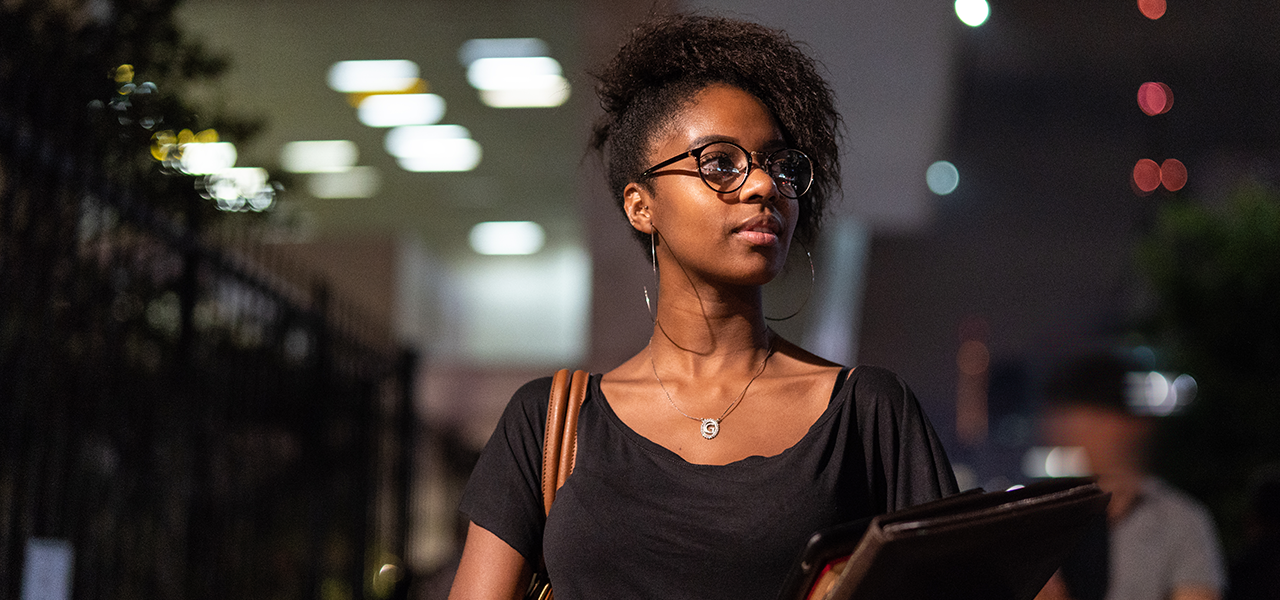By Ariama C. Long | New York Amsterdam News | Word In Black
(WIB) – A recent report on the state of Black students in community colleges highlights a decline in enrollment since the pandemic and the everpresent inequitable policies that create barriers to higher education.
The report was published by the Joint Center for Political and Economic Studies. Director of Workforce Policy at the Joint Center Dr. Alex Camardelle said that for many Black Americans community colleges hold the promise of getting a job and access to higher education. Camardelle is concerned that current policies are creating alarming racial disparities at these institutions.
“Black workers are struggling to make ends meet during this health and economic crisis. Community colleges provide a path forward to ensure workforce readiness for all, but there are barriers holding back Black students from reaching their full potential,” said Camardelle.
The report found that Black student enrollment at community colleges has steadily declined over time and has dropped during the COVID-19 pandemic. From fall 2019 to fall 2021, enrollment fell 18% for all Black students who also experienced the lowest graduation rates when compared to their peers.
“In fact, findings from a recent Joint Center report show that Black students at community colleges experience lower graduation rates and earn tens of thousands of dollars less after graduation, while having to take on more debt than their peers to pay for school,” said Camardelle. “But, it doesn’t have to be this way.”
Unfortunately, some of these enrollment trends are reflected in New York City’s institutions as well.
Jesse F. Kane is the senior vice president for student success and enrollment management at Medgar Evers College. Although Medgar Evers is a prestigious four-year undergraduate college that offers associate degree programs rather than a community college, Kane noted a decline in 2-year degrees.
“Following the national trend, we have seen our largest decline in our enrollment has been in our 2-year degree programs,” said Kane. “This decline has been exacerbated by the pandemic, during which we experienced a more than 15% decline. We are implementing strategies to restore this population of students by continuing to leverage our Accelerated Studies in Associate Program (ASAP), which is designed to eliminate barriers that associate students face.”
According to a City University of New York (CUNY) spokesperson, the percentage of Black students enrolled at CUNY community colleges has not declined since 2019 although enrollment has decreased across the board during the pandemic, which is consistent with national trends. CUNY’s community colleges are Guttman Community, Queensborough, Kingsborough, Bronx Community, Hostos, Manhattan Community, and LaGuardia Community.
“CUNY has taken many steps to help students who paused their education to re-enroll and created more workforce development programs to attract new students, including those who want to upskill in high-demand fields but not seek a formal degree,” said the spokesperson. “The road to recovery in New York City runs through CUNY and we are working with our partners in government and the private sector to get more students the education and skills they need to succeed in the workplace and improve their economic mobility.”
The spokesperson said that CUNY has taken multiple steps to help students during the pandemic, including pardoning over $100 million in debt to over 57,000 students through The CUNY Comeback program, not withholding the transcript of students with debt, and distributing $636 million in federal emergency grants and nearly $10 million through the Chancellor’s Emergency Fund.
The report also finds that the average Black community college graduate earns $20,000 less yearly than their peers, and white households with just high school diploma holders earn $2,000 more than Black community college graduates.
Camardelle said that by addressing basic student needs, such as childcare, tuition costs, and better transfer policies, community colleges can work to produce more equitable outcomes for Black students.
“And the biggest takeaway of all—making community colleges tuition-free will benefit Black students the most,” said Camardelle.
Free college might be a touch ambitious, but at least the Biden-Harris administration seems to be making progress on their promise of student debt relief. The plan is projected to help borrowers and families recover from the pandemic and prepare to resume student loan payments in January 2023.
By targeting student debt relief, Biden hopes to at least narrow the racial wealth gap since almost 71% of Black undergraduate borrowers are Pell Grant recipients, and 65% of Latino undergraduate borrowers are Pell Grant recipients.
Governor Kathy Hochul also greenlit the Part-Time TAP program in August 2022. The program is an $150 million expansion of New York State’s popular Tuition Assistance Program. It will now include students who are pursuing their degree part-time.
Ariama C. Long is a Report for America corps member and writes about culture and politics in New York City for The Amsterdam News. Your donation to match our RFA grant helps keep her writing stories like this one; please consider making a tax-deductible gift of any amount today by visiting:https://tinyurl.com/fcszwj8w
This post was originally published on New York Amsterdam News.
The post Study Finds Black Student Enrollment at Community Colleges Has Steadily Declined appeared first on NNPA Education Public Awareness Program.











